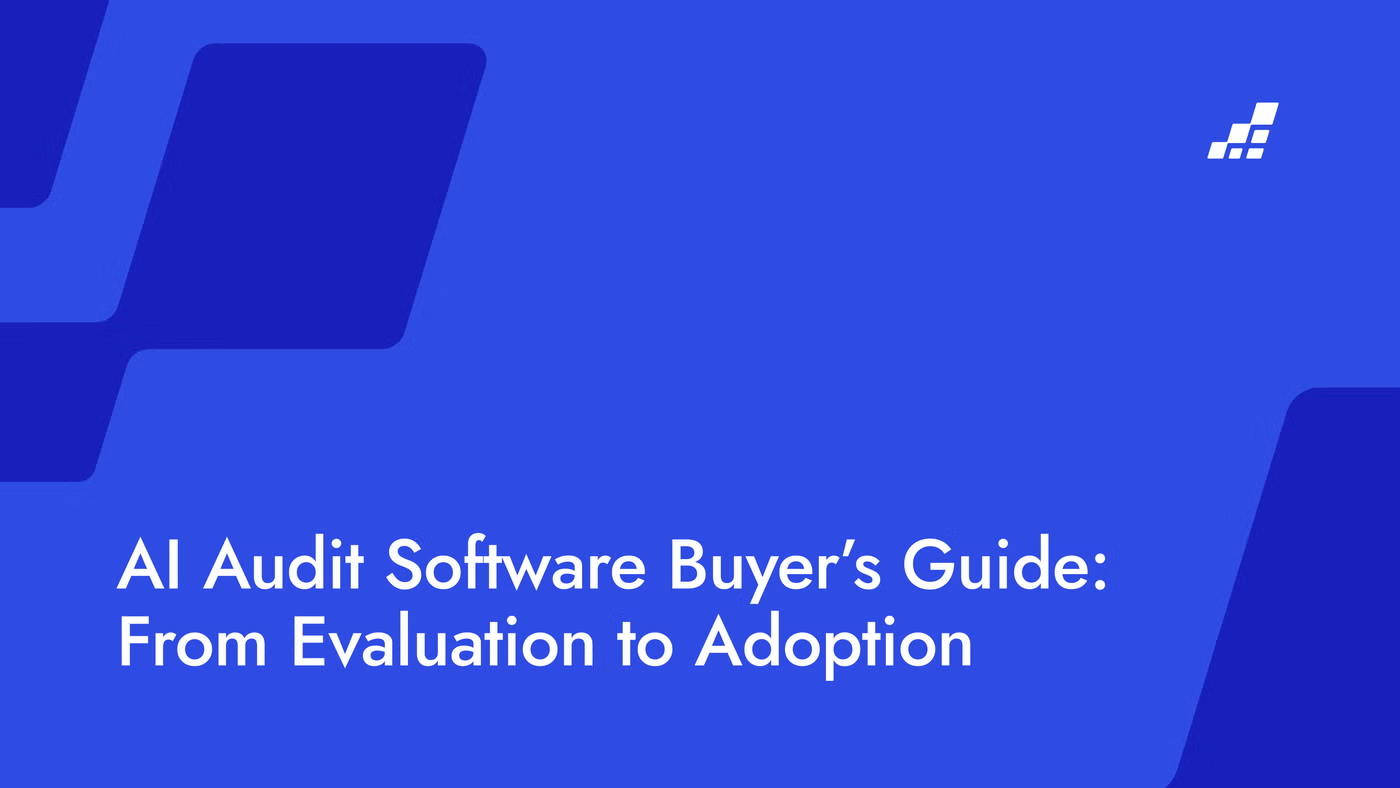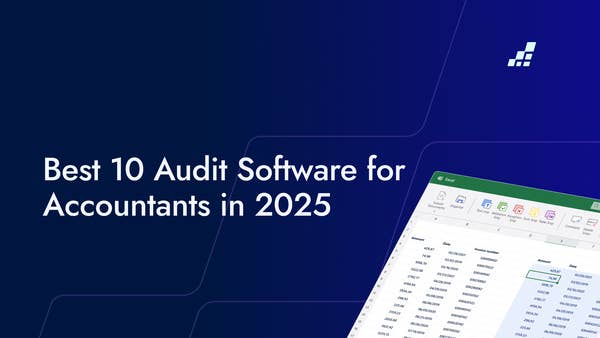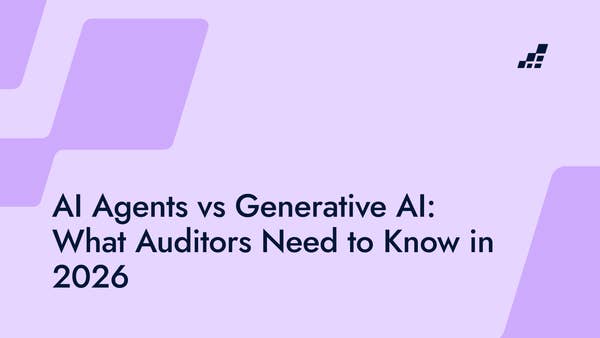- /
- Blog
AI Audit Software Buyer’s Guide: From Evaluation to Adoption

The conversation around AI in audit has shifted. It is no longer about whether to adopt AI, but about how to do it right.
For most firms, that means facing a fundamental question: should you build your own tools or buy from a specialized vendor?
At DataSnipper Connect ‘25 in New York, Bas Willems, VP of Marketing at DataSnipper sat down with Connor Buckley, Account Manager at DataSnipper, Mike Levy, CEO at Cherry Hill Advisory, and Terence Artus Jr., Director at Citrin Cooperman to discuss their playbook for choosing technology that lasts.
This guide distills their key insights. It explains how to make the build-or-buy call, and if you choose to buy, how to evaluate vendors, prove ROI to leadership, and drive adoption across your teams.
In the new era of audit automation, success is defined by how effectively you integrate, scale, and manage the tools you select.
Why the build vs. buy decision matters more than ever
A few years ago, most audit teams prioritized cost and efficiency when evaluating new technology. But with AI now reshaping the economics of automation, those criteria have evolved.
The question is no longer just “what’s cheaper?” but “what delivers lasting value?”
Building in-house can seem appealing for control or customization, but it comes with tradeoffs such as time, resources, and ongoing maintenance. Even large firms that have invested heavily in AI infrastructure often face long development cycles and high upkeep costs.
On the other hand, buying from specialized vendors offers speed, innovation, and access to continuously improving technology. Vendors that focus solely on audit automation evolve their products much faster than any internal IT team can manage.
Many firms now prefer a hybrid approach, buying core infrastructure and customizing the final 10 to 20 percent to fit their workflow. This approach is fast to deploy and still tailored to the firm’s specific needs.
Ultimately, the right path depends on your strategy. If your goal is agility, faster ROI, and alignment with audit’s evolving standards, buying and customizing smartly is often the more sustainable move.
From decision to action: How to choose and adopt the right AI audit software
Once the decision to explore new technology has been made, the focus shifts to execution. Selecting AI software requires both strategic thinking and practical planning, since the choice will shape how efficiently teams work and how consistently the firm delivers quality.
The four steps below provide a clear framework for evaluating, implementing, and adopting AI audit software in a way that delivers measurable value and lasting impact.
Step 1: Define your business case before evaluating tools
Before looking at features or AI capabilities, start with a clear understanding of why you need new technology. Many audit teams make the mistake of chasing innovation without first identifying the exact business problem they are trying to solve.
The right approach begins with your scorecard of objectives. Ask yourself:
- What are the bottlenecks or inefficiencies that most impact our audit quality or team workload?
- Which tasks consume the most manual effort and can realistically be automated?
- How will solving these problems improve value to the business or clients?
This step keeps your focus on business impact, not hype. For example, you may not need an advanced AI model if a simpler automation can achieve the same goal. The priority should be to fix actual pain points, such as document matching, vouching, or data extraction, before expanding to larger use cases.
Once your objectives are clear, categorize your requirements into two groups: must-haves and nice-to-haves. This helps avoid feature overload and allows you to evaluate vendors against measurable goals rather than promises.
By grounding your evaluation in a business case, you ensure every decision aligns with your audit strategy and delivers meaningful ROI, not just new technology for its own sake.
Step 2: Key evaluation criteria for AI audit software
Once you know what problem you are solving, the next step is to evaluate potential solutions using the right criteria. With so many tools available, it can be difficult to see what truly sets them apart. The real difference lies in value, usability, and alignment with your team’s goals.
Here are the main criteria to focus on when comparing vendors:
1. Core functionality and audit-specific value
Look for solutions that directly address audit pain points such as evidence gathering, sampling, testing, and documentation. Generic AI tools can be powerful, but they often lack the structure, traceability, and accuracy required for audit workflows. The best-fit tools are built with an understanding of audit requirements and compliance needs.
2. Integration and workflow fit
Your audit software should fit naturally into your existing environment. Seamless integration with Excel, document management systems, or client portals reduces the need for manual copy-paste and minimizes data errors. A good tool should enhance your workflow, not disrupt it.
3. Security and compliance
When dealing with confidential client data, security and privacy are non-negotiable. Check for compliance with standards like SOC 2 or ISO 27001, and verify where your data is stored and processed. This is especially important if your firm operates across multiple regions with strict data protection rules.
4. Vendor roadmap and support alignment
Buying software also means buying into a vendor’s future. Ask how often they release updates, how they handle feature requests, and whether their product direction matches your firm’s strategic needs. If possible, choose vendors who invite client feedback or co-development opportunities.
5. Total cost of ownership and scalability
Step 3: How to prove ROI and secure internal buy-in
AI adoption succeeds only when its value is clearly demonstrated and understood across the firm. Focus on showing tangible improvements in efficiency, accuracy, and employee experience.
Start small with pilot projects that focus on measurable results. Demonstrate how the tool reduces manual effort, improves audit coverage, or speeds up review processes. Simple before-and-after comparisons, such as how many hours were saved or how many additional samples were tested, make a powerful case for investment.
Beyond measurable gains, highlight how automation improves the quality of work life. When staff spend less time on repetitive tasks, they can focus more on critical analysis and client value, and maintain a healthier work-life balance so they can go home on time. This helps strengthen both performance and retention.
Step 4: Drive adoption after purchase
Selecting the right software is an important step, but true success depends on how well it is adopted across the team. When people understand how the technology fits into their daily work and see its value firsthand, it quickly becomes part of the firm’s routine rather than a one-time investment.
Start by making training practical and accessible. Short, task-based learning such as two- or three-minute tutorial videos works far better than long sessions. Focus on helping users understand how the tool fits into their day-to-day tasks, not just what features it offers.
Encourage a network of tech champions within your teams. These are the early adopters who can help others troubleshoot, share quick tips, and keep momentum going. Peer-to-peer guidance often builds more trust and enthusiasm than top-down mandates.
When adoption is led by staff who genuinely see the benefits, it creates lasting change and ensures the technology becomes part of how the firm works, not just another tool that gets overlooked.
The future of AI in audit: key takeaways
AI is changing how audit teams operate, from automating repetitive tasks to enabling deeper, data-driven insights. What began with basic automation and generative AI is now evolving into agentic AI, where systems can independently analyze information and assist in decision-making.
In the coming years, these tools will become more capable and reliable, handling areas like testing, vouching, and anomaly detection with minimal oversight. This shift will allow auditors to focus on higher-value work such as risk assessment, strategic analysis, and client collaboration.
To prepare, firms should continue to explore new use cases, invest in training, and foster a mindset of continuous improvement. The firms that view AI as a partner in quality, not just a shortcut for efficiency, will stay ahead of the curve and attract the next generation of audit talent.
Ultimately, the goal is not to replace people with technology but to enhance how they work. By choosing the right tools, proving their value, and embedding them into daily workflows, firms can build an audit function that is more accurate, efficient, and resilient for the future.
See how top firms evaluate, implement, and scale AI audit automation with DataSnipper.


.png?width=600&quality=70&format=auto&crop=16%3A9)
